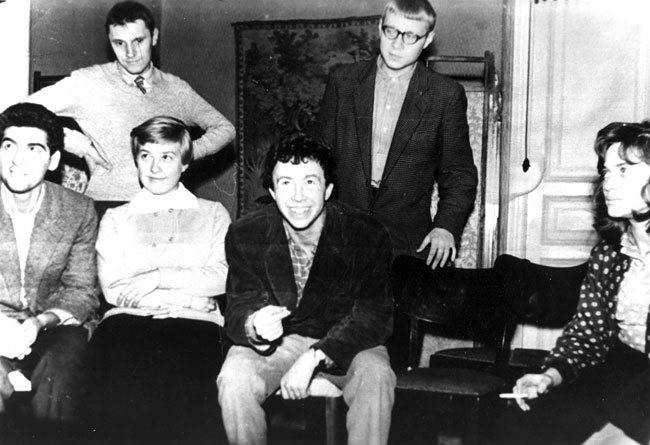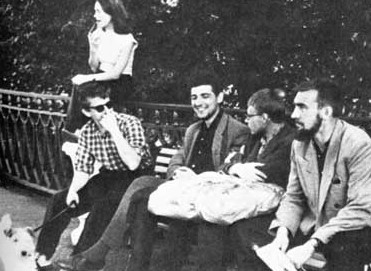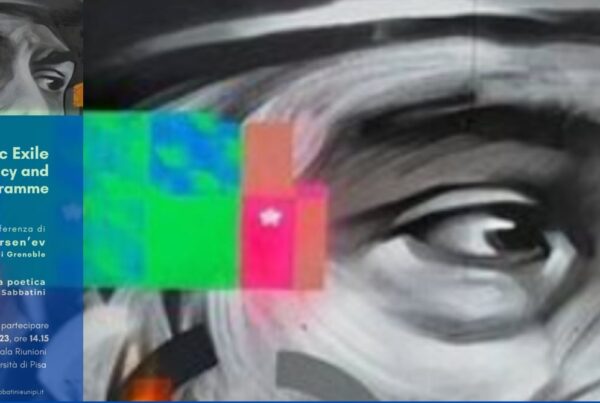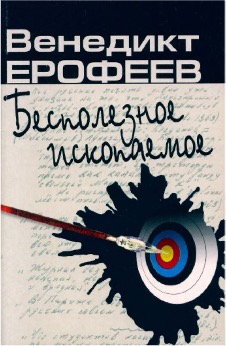
Leonid Vinogradov, Margarita Razumovskaia, Vladimir Ufliand, Nina Loseva, Sergei Kulle e Mikhail Eremin. Leningrad, 1959. Pic by Natasha Sharymova.
Dates: 1954-1956
Place: Leningrad
Members: Lev Losev, Vladimir Ufliand, Mikhail Eremin, Sergei Kulle, Leonid Vinogradov, Mikhail Krasil’nikov, Iurii Mikhailov, Aleksandr Kondratov, Vladimir Gerasimov, Oleg Tselkov
Publishing initiatives: Brynza (Bryndza) and S’’edim brynzu! (Let’s eat bryndza!) almanacs, 1951-1952; poetic anthology UVEK (1977).
Description:
The name of the group of poets known as the ‘Philologists’ (Filologicheskaia shkola) was invented by Kostantin Kuz’minskii. The group first came together in 1954 during the LITO (acronym for Literaturnoe ob”edinenie, Literary society) sessions at the Faculty of Philology and included Lev Losev, Vladimir Ufliand, Mikhail Eremin, Sergei Kulle, Leonid Vinogradov, Mikhail Krasil’nikov, Iurii Mikhailov and later Aleksandr Kondratov. The circle of poets frequented the same places and shared a desire to challenge dominant aesthetics. The painters Oleg Tselkov and Vladimir Gerasimov, an important figure with an encyclopaedic intellect (cf. Savitskii 2002: 147), are sometimes associated with the group. The group was defined not so much by a set of common motifs or literary poetics, as by a shared belief in an ‘amateurist’ approach to writing and an indifference to the world of official publishing. This is one of the main differences between the ‘Philologists’ and the ‘Geologists’ (Geologicheskaia shkola), regulars at the LITO of the Leningrad Gornii Institut (Mining Institute), whose name was also coined by Kuz’minskii, and whose numbers included: Andrei Bitov, Gleb Gorbovskii and Vladimir Britanishskii and others). Some of their works were edited by contemporary publishers and journals, others circulated through the samizdat (cf. Pavlova 2004: web).
The works of the ‘Philologists’ are varied, ranging from the alogicalism of Kulle to the irony and satire of Losev, the esotericism of Eremin’s poetry and the folklore and solemnity of Ufliand (cf. Sabbatini 2009: 47-50). As a group, were among the very first to be labelled andegraund and can be considered the first ‘performance group’, according to Ufliand’s definition (aktsionistskaia gruppa) (cf. Sukhovei: web).
One of the key characteristics of the group’s work was their pioneering tendency to create spectacle, although they nevertheless remained rooted in the Russian and Western tradition of the first half of the century. The primary aesthetic of the group’s performances is essential (in contrast to the criminalisation politically made by Soviet authorities); not all the members of the group took part in the improvisations and their execution was not always planned in advance. One of these performances took place a few months before Stalin’s death, on 1st December 1952, the anniversary of Sergei Kirov’s assassination. At this time the dictator was waging a strongly nationalist (and anti-Semitic) propaganda campaign which was probably the target of the protest staged by Krasil’nikov, Mikhailov and Ėduard Kondratov, Aleksandr’s brother. The students attended their usual Russian literature lesson wearing traditional Russian clothes and carrying local products (a wicker basket with big onion tubers, some buns of rye bread and three bottles of kvas). After this ‘happening ante litteram’ all three were expelled from Komsomol, the Party youth organization and banished from the university (although Ė. Kondratov got off lightly in that he was merely forced to leave the department of journalism; cf. Kondratov 2008: 31). Another daring exhibition, “Long Live Pasternak!”, was staged by Eremin, Ufliand and Vinogradov who wrote the slogan in capital letters on the riverside in front of the entrance gate to the Summer Garden after the author of Doktor Zhivago was forced to refuse the Nobel prize he had been awarded (cf. Ufljand 1997: 75). Some of the actions of the philologists-poets were severely punished: during the anniversary of the revolution (on 7th November 1956, a few days after the repression of the uprising in Budapest), Krasil’nikov was arrested and sentenced to four years in a labour camp in Mordovia, on charges of ‘having paid tribute to “the bloodthirsty gangs of Tito Rankovich and Imre Nagy’s” (cf. Genis: web; Iocca 2019). The year of 1956 marks the end of the group’s golden age: not only Krasil’nikov, but also Ufliand and Vinogradov were victims of repressive measures.
The group’s openly neo-avantgarde aesthetics together with its demonstrative gestures aimed at creating scandal, often on important anniversaries, recall the Futurist movement of the beginning of the century. The ‘Philologists’ are sometimes remembered as ‘Krug Mikhaila Krasil’nikova’ (Mikhail Krasil’nikov’s Circle), ‘Osvezhisty’ (from the verb osvezhit’, ‘to freshen’) or ‘UVEKi’ (the UVEKs). This last name refers to a publication created by some of its members, a samizdat collection dated 1977, whose title is an acronym formed by the initials of the four author-editors: Ufliand, Vinogradov, Eremin and Kulle. Some members of the Filologicheskaia shkola are also credited with the publication of the Brynza (Bryndza) and S’’edim brynzu! (Let’s eat bryndza!) manuscript almanacs, published at the Faculty of Letters in 1951 or 1952 and containing Mikhailov’s, Krasil’nikov’s and, perhaps, Aleksandr Kondratov’s verses (cf. Savitskii 2002: 142)..
Federico Iocca
[30th June 2021]
Translation by Alice Bucelli
Bibliography
- Genis A., “Homo ludens zhiv”, Interv’iu s avtorami Filologicheskoi shkoly, http://www.svoboda.org/content/transcript/24200093.html, online (last accessed: 30/06/2021).
- Iocca F., Versi non conformi e protohappening all’alba del disgelo: Il circolo di Krasil’nikov (“o Scuola dei filologi”) di Leningrado, “eSamizdat”, XII (2019): 143-152.
- Kondratov Ė., Universitetskaia naberezhnaia. Nechto memuarnoe, Sankt-Peterburg-Moskva-Samara 2008.
- Pavlova S., Leningradskii literaturnyi andegraund kak kul’turnyi fenomen: spetsifika formirovaniia i funktsionirovaniia, “Teleskop: nabliudeniia za povsednevnoi zhizn’iu peterburzhtsev”, 2 (2004), http://www.teleskop-journal.spb.ru/?cat=33&type=by_year&value=2004&id=263 online (last accessed: 30/06/2021).
- Sabbatini M., “Quel che si metteva in rima”: cultura e poesia underground a Leningrado, Collana di Europa Orientalis, Salerno 2008.
- Savitskii S., Andegraund. Istoriia i mify leningradskoi neofitsial’noi literatury, Novoe Literaturnoe Obozrenie, Moskva 2002.
- Sukhovei D., “Mne tiazhelo ottogo, chto ia deistvitel’no ostalsia odin”, Interv’iu s Mikhailom Ereminym, http://www.colta.ru/articles/literature/1689, online (last accessed: 30/06/2021).
- Ufliand V., Piatidesiatnyi shestidesiatnik, in V. Kulle (ed.), Filologicheskaia shkola. 40 let, Literaturnoe Obozrenie, 5 (1997): 72-78.
To cite this article:
Federico Iocca, Philological School, in Voci libere in URSS. Letteratura, pensiero, arti indipendenti in Unione Sovietica e gli echi in Occidente (1953-1991), a cura di C. Pieralli, M. Sabbatini, Firenze University Press, Firenze 2021-, <vocilibereurss.fupress.net>.
eISBN 978-88-5518-463-2
© 2021 Author(s)
Content license: CC BY 4.0





